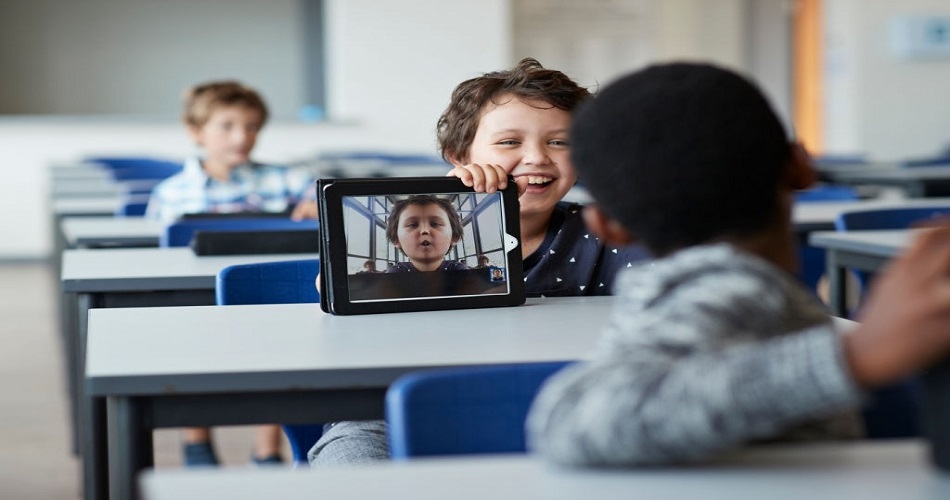Ways To Promote Inclusivity In Digital Classroom
12th May 2021
The digital classroom has become a new reality for all learners. Both educational institutes and teachers are in a constant rush to tailor-make the digitalized learning process for its highest good. While it may seem simpler to shift from classroom setup to remote learning setup, there remains a lot of thought to be put while developing a universal learning program.
No signal students learn similarly or at the same time. Learning pace is unique for everyone. Understanding the basic ground of inclusivity and respecting individuality is the epitome of a 21st century teacher.
If we truly look into the general structure of learning materials, it has designed to serve the average students only. The matter of inclusivity from the origin has been overlooked for a long time.
Learning difference cover students from a broad spectrum such as –
- Learning disabilities
- Different cultural background
- Non-native English speakers
- Students with limited resources
All the factors relating to learning differences exist in both digital classroom setups as well as in the traditional classroom. Students with special needs mostly need a sense of association. A teacher's strategy is to minimize the effects of these factors and help students learn in full potential.
Before we discuss the strategies to design effective lesson plans for the digital classroom, here are few reminders on what should not get washed down in technology rain –
- Not forgetting the need for physical activity especially with young learners
- Be mindful about how much screen time you are allotting per day to reduce the negative strain of blue-ray from digital gadgets.
- Paying attention to those who need your personalized attention
- Be consistent with rules and expectation
- Keep enough room for flexibility by allowing space for adjustments
Consider these strategies while planning your digital lessons for your students–
Clarifying Learning Goals
Your priority as a teacher to address learning differences must be setting goals for each lesson. With this, you are clearly stating what is to be expected from students. It is going to help them be centered and stay focused throughout, ensuring a higher rate of achievement on the lesson objectives.
Emphasizing on Visual Impact
Statistically speaking around 65 percent of the population are visual learners. Plus when you combine visuals with the lecture students are able to flow through the lesson smoothly. In a digital classroom environment lesson presentation is a crucial element for the whole learning process. Keeping a thorough check on the below factors are integral –
- Add visual aid whenever possible
- Use simple font style, size, and enough spacing to make material readable
- For reading materials, highlight key areas to ensure reader don’t miss them
- Provide enough resources in the form of video materials and screencast content – students can re-watch as much as they need
Design Multi-model Structured Lesson
Multi-model structured lesson encompasses all types of students such as visual, auditory, reading, writing, etc. Adapting multi-modal structures lesson reflects a healthy approach towards inclusivity. This type of framework provides the freedom of choice to all learners that they can independently access the learning material with flexibility.
The content usually comprises of –
- Video
- Audio
- Visual aids
- And writing materials
This way the engagement rate can also be increased with constant improvement in areas of weakness.
Provide Slower and Simplified Content
The major difference between digital lessons and face-to-face lessons is that instant guidance and feedback may get delayed in the digital setup. More than how many lessons you are delivering, the matter becomes limited to how much your students are able to grasp. Instead of focusing on covering the larger portion, emphasis on student's pace, provide them enough time to understand the material.
Another way to look at it is, focus more on skill-based learning. This way you will be able to create autonomy within your students.
Give Them Abundant Assurance
Empower students on regular basis. Celebrating their uniqueness even in their smallest achievement will keep them motivated. The idea of digital interaction at times leaves us with a feeling of separation. This somehow makes it more essential to recognize and encourage your students to let them know they are being noticed. Students with learning differences often lack the confidence to present themselves. The role of a teacher particularly lies in helping them feel connected and inspired.
Learning is evidently a never ending process. With so many changes around us, all we can is be patient and reassure each other. Above all, we may have shifted to a virtual learning zone but let’s not forget a healthy learning environment can only be created when all learners are given equal chance and attention each individual deserves.
To enhance your skill as an inclusive teacher apply for special education courses to maximize your chance to become a 21st-century teacher.
Written By: Soma
Leave a Reply
Recent Posts
- Make Language Learning Fun 5 FunFilling ESL Activities For Teachers To Implement In ESL Classroom
- The Role Of Teachers As Counselors In Eradicating Students Fears
- Achieving Financial Stability For Special Need Parents
- Make Teaching English To Beginners Fun And Engaging With Our 5 Effective Tips
- Achieve A Healthy WorkLife Balance As A Teacher With This Alternative
- Foster A Growth Mindset In Your School Students Teachers And Staff With Proven Strategies


